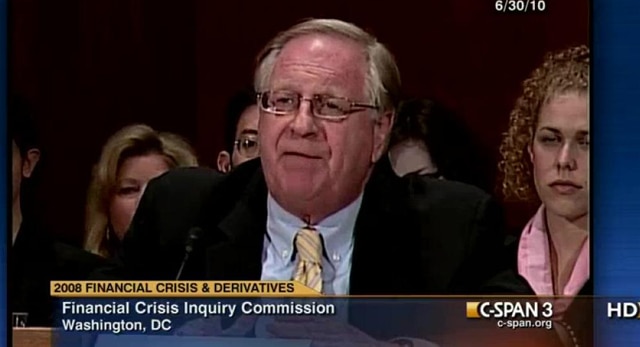
The 1980s ushered in an era of exotic financial products that were hailed for fostering new ways to manage risk. But this alphabet soup of over-the-counter exotics—CDO, CDS, MBS, SLAB, HEL, HELOC and more—brought the world to the brink of financial ruin in 2008.
Following taxpayer bailouts of major market participants, the OTC derivatives market has bounced back and now totals $544 trillion. Many are warning of new crashes ahead.
The origins of asset-backed securities (ABS) date to the 1970s, when US government mortgage agencies Fannie Mae, Ginnie Mae and Freddie Mac pooled mortgages into a security that could be sold in secondary markets, adding liquidity to the housing market while allowing lenders to offload interest-rate risk. The first true ABS was issued by Sperry Lease Finance Corp. in 1985, and was tied to the income stream from computer leases.GMAC issued notes backed by auto loans a year later. At roughly the same time, exotic derivatives, which were likewise designed to shift risk, were taking hold. Salomon Brothers brokered the first currency swap in 1981, between IBM and the World Bank.
The growth of securitized financial products—which “collaeralize” not only debt (CDOs) but loans (CLOs) and bonds (CBOs)—took off. Drexel Burnham Lambert introduced the CDO in 1987. Special-purpose vehicles issued these asset-backed securities, composed of bundles of bonds, mortgages, bank loans and even other CDOs.
But the risks weren’t always clear. Slicing and dicing the bundles created tiers of owner classes, with the lowest-rated tiers (dubbed toxic waste) having the highest yields. Despite a series of losses on derivatives trading in the mid-1990s by Procter & Gamble, Metallgesellschaft and California’s Orange County (which was plunged into bankruptcy), the market continued to grow by leaps and bounds.
J.P. Morgan created the first credit default swap (CDS) in 1997, transferring Exxon Valdez credit risk to the European Bank for Reconstruction and Development in exchange for a premium. By the late 1990s, the OTC market in interest rate and currency swaps was doubling in size yearly. The notional amount of swaps outstanding grew from $17 trillion in 1995 to more than $600 trillion in 2008.
Warren Buffett, chairman and CEO of Berkshire Hathaway, warned as early as 2002: “These instruments will almost certainly multiply in variety and number until some event makes their toxicity clear. [They are] weapons of mass destruction.”
That event was the global financial crisis. “The darkness of this huge, multitrillion dollar, unregulated market not only caused, but substantially aggravated, the financial crisis,” Michael Greenberger, professor at the University of Maryland law school, testified at a Financial Crisis Inquiry Commission hearing in Washington in 2010.
Underwriters of credit default swaps did not have adequate capital to pay off guarantees as housing prices slumped. “No institution could be trusted, because there was no transparency as to which institutions held toxic CDSs,” Greenberger said. “By removing the … swaps market from the traditional norms of market regulation, a highly speculative derivatives bubble was created that was opaque to federal regulators and market observers alike.” The American taxpayer funded bank bailouts and rescued the economy, Greenberger testified. Could it happen again?
“I still feel the same as I did in 2010,” Greenberger, who is a former director of the division of trading and markets at the Commodity Futures Trading Commission, says now. “There are hidden loopholes in Dodd-Frank.”



